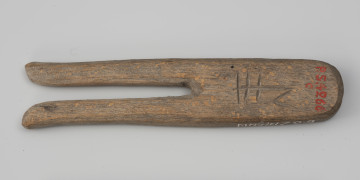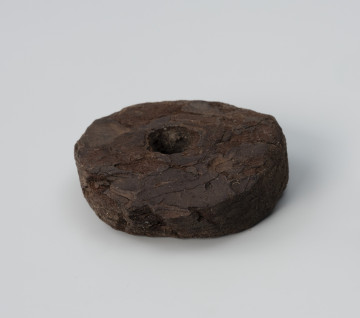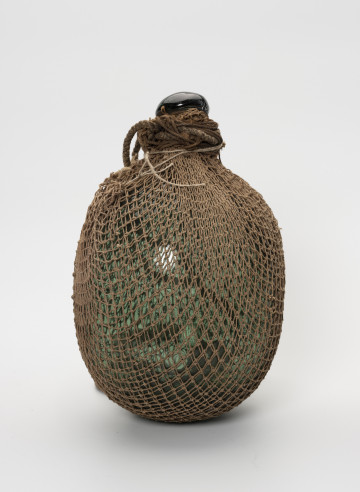
Buckle with ownership mark
1890 — 1950
National Museum in Szczecin
Part of the collection: Traditional fishing
Floats, also known as buoys, are the rigging elements of set nets and seines. Together with weights, they ensure that the nets are properly positioned in the water, which is important for a good catch. They also point out the location of the net to the fishermen. Other types of floats include markers and buoys, used to delimit the boundaries of the fishery. Floats are of various materials such as wood, bark, reed, glass, sheet metal and more recently polystyrene, plastic and other water-resistant plastics. They can be of various sizes and shapes, such as rectangles, ovals, circles, cylinders, cones or spheres. In the past, net floats were frequently built by the fishermen themselves, often bearing their ownership marks (merki), by which they could identify their nets set in the water. Today, various types of factory-made floats are available for purchase. In the collection of the Pomeranian Ethnography Department of the National Museum in Szczecin, the floats total more than forty inventory items. The featured objects, originating from 1949 Wolin, are a set of floats of similar size and shape, made from poplar bark. Agnieszka Słowińska
Author / creator
Object type
fishing net buoy
Technique
wood processing, hewn
Material
poplar bark
Origin / acquisition method
purchase
Creation time / dating
Creation / finding place
Owner
Muzeum Narodowe w Szczecinie
Identification number
Location / status

1890 — 1950
National Museum in Szczecin

801 — 1201
National Museum in Szczecin

1901 — 1949
National Museum in Szczecin
DISCOVER this TOPIC
Museum of King Jan III's Palace at Wilanów
DISCOVER this PATH
Educational path